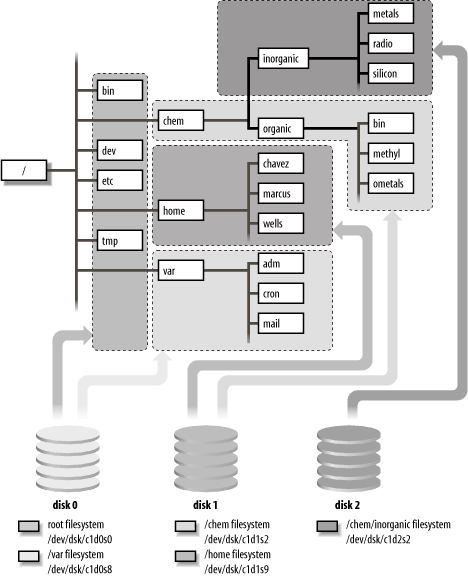Managing Filesystems
This section covers such topics as mounting and dismounting local
and remote filesystems, the filesystem configuration file, and checking
local filesystem integrity with the fsck utility: in other words, the nitty gritty
details of managing filesystems.
Mounting and Dismounting Filesystems
Mounting is the process that makes a filesystem’s contents available to the system, merging it into the system directory tree. A filesystem can be mounted or dismounted: that is, it can be connected to or disconnected from the overall Unix filesystem. The only exception is the root filesystem, which is always mounted on the root directory while the system is up and cannot be dismounted.
Thus, in contrast to some other operating systems, mounting a Unix filesystem does more than merely make its data available. Figure 10-1 illustrates the relationship between a system’s disk partitions (and their corresponding special files) and its overall filesystem. On this system, the root filesystem—the filesystem stored on the first partition of the root disk (disk 0)—contains the standard Unix subdirectories /bin, /etc, and so on. It also contains the empty directories /home, /var, and /chem, which serve as mount points for other filesystems. This filesystem is accessed via the special file /dev/dsk/c1d0s0.

Figure 10-1. Mounting disk partitions within the Unix filesystem
The figure also shows ...
Get Essential System Administration, 3rd Edition now with the O’Reilly learning platform.
O’Reilly members experience books, live events, courses curated by job role, and more from O’Reilly and nearly 200 top publishers.

